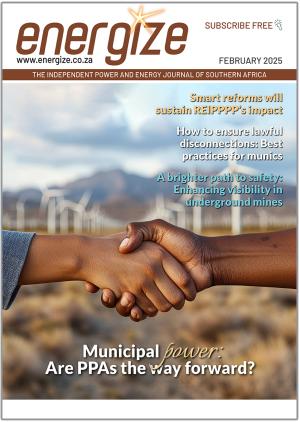Eskom is accelerating the construction of over 2 GW of renewable energy plants as part of its Just Energy Transition strategy. These plants will help repurpose and repower some of the utility’s aging coal-fired power stations.
During a media briefing on Friday, June 14, marking his first 100 days in office, Eskom Group Chief Executive, Dan Marokane, stressed that the utility did not need to wait for the shutdown of its coal-fired power stations to build its renewable energy portfolio.
“We’ve decided to start immediately with that implementation. We have Lethabo in the market now and have developed a pipeline of just over 2 GW of renewable technologies. We will start role modelling the integration of these technologies as we move forward,” he said.
In pursuit of this goal, Eskom issued a tender in April to develop a 75 MW solar plant near the Lethabo coal-fired power station in the Free State.
Additionally, the Komati coal-fired power plant, decommissioned in 2022, will be transformed into a renewable generation site, incorporating 150 MW of solar power, 70 MW of wind energy and 150 MW of battery storage. This project is poised to become one of the largest globally in decommissioning, repowering and repurposing a coal-fired power plant. Eskom is also planning to fast-track the repurposing of other power plants, including Grootvlei, Hendrina and Camden.
Eskom’s generation portfolio will be diversified to include its coal fleet, accelerated renewable energy projects, gas-to-power, hydro-electricity and nuclear energy. Discussing the evolution of Eskom’s production value chain, Marokane noted a shift from large power plants to smaller power producers.
When asked about funding the renewables business, especially given the constraints imposed by National Treasury’s R245 billion Eskom debt relief package (which limits Eskom from raising capital to finance generation), Marokane noted that Eskom would need to explore innovative funding mechanisms such as the Just Energy Transition partnerships.
Speaking about Eskom’s finances, Marokane said escalation of municipal debt, currently a staggering R74,3 billion, was unsustainable. Only 4% of the 70 municipalities accepted into Eskom’s debt relief programme were compliant, he said. “It’s time the country engages in a conversation about municipal debt with the same vigour we’ve seen around the energy availability factor. We need a sustainable solution for electricity provision payment at municipal level,” he asserted.
In terms of distribution, Marokane mentioned significant changes were forthcoming due to the expected market reforms with the passage of the Electricity Regulation Amendment Bill. Passed by the National Council of Provinces on May 16, the Bill awaits President Cyril Ramaphosa’s assent. It aims to create an open-market platform for competitive electricity trading. The National Transmission Company of South Africa (NTCSA), set to become operational on July 1, will introduce new initiatives and products to capitalise on the evolving market.
“Investment in that space will primarily support the direction the NTCSA is taking. Similarly, we will explore new ways to engage with our customers,” he said.
Looking ahead, Eskom’s strategy will focus on maintaining financial and operational sustainability, facilitating the development of a competitive energy industry and completing the unbundling and corporatisation of its generation and distribution business units. “We are establishing the foundation to rebuild trust and credibility in Eskom through transparent performance, reaffirming the utility as a worthy investment as we pursue our strategic initiatives. We intend to remain a critical player in South Africa’s evolving future energy market,” Marokane concluded.
Eskom is targeting the delivery of more than 2,5 GW of new capacity by March 2025 with contributions from Koeberg Unit 2, Medupi Unit 4 and two Kusile units.















